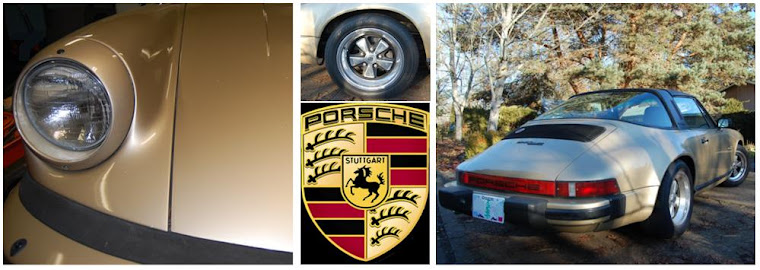I recently logged my first 1,000 EV miles. It was time to bump the Soliton 1 controller to the maximum setting of (cue the sinister movie sound clip) – 1,000 amps. There are a couple reasons to begin with a low current and ramp up to greater performance over time. While testing out the new EV system, a low current setting will minimize damage, if there is a problem. Another reason is I’m using a motor with brushes.
When a DC motor is new, the brushes do not make full contact with the commutator. Small imperfections in the contour radius at the brush and commutator interface increase the electrical impendence of the motor. If you try to pass a lot of current through new brushes, the motor is at risk of arcing and overheating. On the bench, I ran the motor for 30 hours at 12 volts. Then, when first installed into the car, the gradual increase in motor current allowed the brushes to properly seat as the high points on the brush get worn away.
With the 1000 amp limit, the difference in performance is significant and amazing. The extra 40 kilowatts of power (50 HP), relative to 600 amps, makes the car fly. The stock 3.0 liter internal combustion engine (ICE) output was rated 127 kW (170 HP). As an electric conversion, I recently logged a run on my commute to work with a current draw of 890 amps producing 120 kW of power (160 HP).
When a DC motor is new, the brushes do not make full contact with the commutator. Small imperfections in the contour radius at the brush and commutator interface increase the electrical impendence of the motor. If you try to pass a lot of current through new brushes, the motor is at risk of arcing and overheating. On the bench, I ran the motor for 30 hours at 12 volts. Then, when first installed into the car, the gradual increase in motor current allowed the brushes to properly seat as the high points on the brush get worn away.
With the 1000 amp limit, the difference in performance is significant and amazing. The extra 40 kilowatts of power (50 HP), relative to 600 amps, makes the car fly. The stock 3.0 liter internal combustion engine (ICE) output was rated 127 kW (170 HP). As an electric conversion, I recently logged a run on my commute to work with a current draw of 890 amps producing 120 kW of power (160 HP).

The logged run did 0 to 60 MPH in 9 seconds. I started in 2nd gear and at 5.7 seconds I shifted to 3rd. The 0 to 40 time was 4 seconds. If I open up my motor RPM limit to 5,500 I can reach 60 MPH in second gear and avoid the 2 second penalty of shifting. 2 seconds is a long shift, but I’m still getting used to this gearbox and after 97,000 ICE miles, the synchro-mesh is not in best form . The car seems to be on par with the stock performance, especially given that with the electric motor, peak torque is available between 0 and 5,000 rpm. I need to find an open bit of road with no traffic and see what happens when I push the full 1,000 amps.



What is the stock 0-60 time? It looks like when you raise the RPM limit you will be close to 6 seconds. After all of that building, looks like you are getting into the having fun stage!
ReplyDeleteThe stock 0-60 time is 7 seconds, flat. I doubt I could have achieved that before the conversion given the 30 year old motor, the wear on the gearbox synchros, and my general lack of experience driving performance cars. I think I will be in the mid 6 second territory soon. That will be just for bragging purposes when showing off the car at shows, as the performance is already good enough for commuting to work. When people say, "Too bad the car won't drive fast anymore," I can counter that actually the car is faster than stock.
DeleteWow Joey, I am jealous! Thanks for the tips on wearing in the DC motor brushes. When I have more time on my hands, I'd like to improve the performance of my electric MR2 as well. How are you generating the curves?
ReplyDeleteI am capturing the RPM data from the Soliton 1 log file and converting to MPH based on the gear ratio.
DeleteGreat to see someone posting real data! Looks like you're 1500 miles and 500 amps ahead of me in the testing phase. If by some miracle our Porsches both end up in the same state we'll have to have a drag race!
ReplyDelete